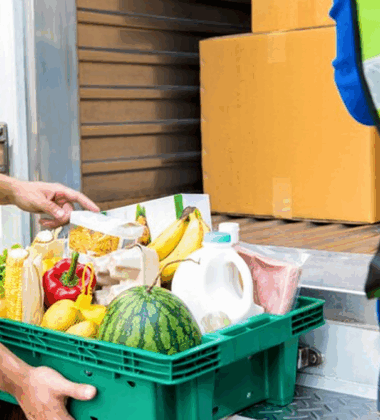Imagine a world where food packaging does more than just protect your meal—it tells you when your food is fresh, reduces waste, and even biodegrades harmlessly into the earth. This isn’t a distant dream; it’s the future of food packaging. As the food industry evolves, so too does the way we package our products. From sustainable materials to smart technology, the packaging of tomorrow is designed to meet the demands of both consumers and the planet.
For industry professionals, staying ahead of these innovations isn’t just about keeping up with trends—it’s about leading the charge toward a more sustainable, efficient, and consumer-friendly future. In this educational deep dive, we’ll explore the latest advancements in food packaging and what they mean for your business.
1. Sustainable Packaging: A Greener Future
Sustainability is no longer optional—it’s a necessity. Here’s how the industry is responding:
- Biodegradable Materials: Packaging made from plant-based materials like cornstarch, sugarcane, and algae that break down naturally.
- Compostable Solutions: Packaging that can be composted at home or in industrial facilities, reducing landfill waste.
- Reusable Systems: Innovative designs that encourage consumers to reuse packaging, from glass jars to refillable containers.
Pro Tip: Transitioning to sustainable packaging can enhance your brand’s reputation and appeal to eco-conscious consumers.
2. Smart Packaging: The Future of Food Safety
Smart packaging is revolutionizing how we interact with food:
- Freshness Indicators: Labels that change color to indicate when food is no longer safe to eat.
- Temperature Sensors: Packaging that monitors and displays the temperature history of perishable goods.
- QR Codes and NFC Tags: Provide real-time information about sourcing, ingredients, and recipes with a simple scan.
3. Edible Packaging: Zero-Waste Innovation
Why throw away packaging when you can eat it?
- Seaweed-Based Wraps: Edible films made from seaweed that dissolve in water or can be eaten with the product.
- Rice Paper and Starch Films: Used for wrapping candies, snacks, and even single-serve condiments.
- Consumer Appeal: Edible packaging is not only eco-friendly but also adds a fun, innovative twist to your product.
4. Active Packaging: Extending Shelf Life
Active packaging goes beyond passive protection to actively preserve food:
- Oxygen Absorbers: Extend the shelf life of products by reducing oxidation.
- Antimicrobial Films: Inhibit the growth of bacteria and mold to keep food fresh longer.
- Moisture Control: Packaging that regulates humidity to prevent spoilage.
5. Minimalist Design: Less is More
Simplifying packaging design can have a big impact:
- Reduced Materials: Use fewer layers and components to minimize waste.
- Clean Labels: Focus on clear, concise information that resonates with consumers.
- Aesthetic Appeal: Sleek, minimalist designs can make your product stand out on the shelf.
6. Recyclable and Upcycled Packaging
Turning waste into worth:
- Recyclable Materials: Packaging made from materials like PET, HDPE, and aluminum that can be easily recycled.
- Upcycled Content: Use post-consumer or post-industrial waste to create new packaging, reducing the need for virgin materials.
- Closed-Loop Systems: Partner with recycling programs to ensure your packaging is collected and reused effectively.
7. Nanotechnology in Packaging
Nanotechnology is bringing big changes to packaging:
- Barrier Properties: Nano-coatings can improve the barrier properties of packaging, keeping food fresher for longer.
- Antimicrobial Surfaces: Nano-materials can inhibit the growth of pathogens on packaging surfaces.
- Smart Sensors: Nano-sensors can detect spoilage or contamination and alert consumers.
8. Consumer-Centric Design
Packaging that puts the consumer first:
- Convenience: Easy-to-open, resealable, and portable designs that fit modern lifestyles.
- Accessibility: Packaging that’s easy to use for people of all ages and abilities.
- Transparency: Clear packaging that allows consumers to see the product inside, building trust and confidence.
9. Regulatory and Industry Standards
Navigating the evolving landscape of packaging regulations:
- Compliance: Stay up-to-date with local and international regulations on packaging materials and safety.
- Certifications: Look for certifications like FSC (Forest Stewardship Council) or BPI (Biodegradable Products Institute) to validate your sustainability claims.
- Industry Collaboration: Work with industry groups to set and meet higher standards for packaging innovation.
10. The Business Case for Innovative Packaging
Investing in innovative packaging isn’t just good for the planet—it’s good for business:
- Brand Differentiation: Stand out in a crowded market with unique, forward-thinking packaging.
- Consumer Loyalty: Build trust and loyalty by aligning with consumer values like sustainability and safety.
- Cost Savings: Reduce material costs and waste through efficient, minimalist designs.
The Future of Packaging is Here
The evolution of food packaging is more than just a trend—it’s a transformation that’s reshaping the industry. From sustainable materials to smart technology, the packaging of tomorrow is designed to meet the needs of consumers, businesses, and the planet.
Ready to lead the charge in packaging innovation? Join us at the Global Products Expo from June 26–28, 2025, at the New Jersey Expo Center, where the latest in sustainable, smart, and innovative packaging takes center stage. Don’t miss out—register today and be part of the revolution!
The future of packaging is sustainable, smart, and full of opportunity. See you at the expo, where innovation meets impact!





